theartsdesk in Grafenegg: Fairytale festival | reviews, news & interviews
theartsdesk in Grafenegg: Fairytale festival
theartsdesk in Grafenegg: Fairytale festival
Classical music takes up residence in a castle in Austria's beautiful Danube Valley
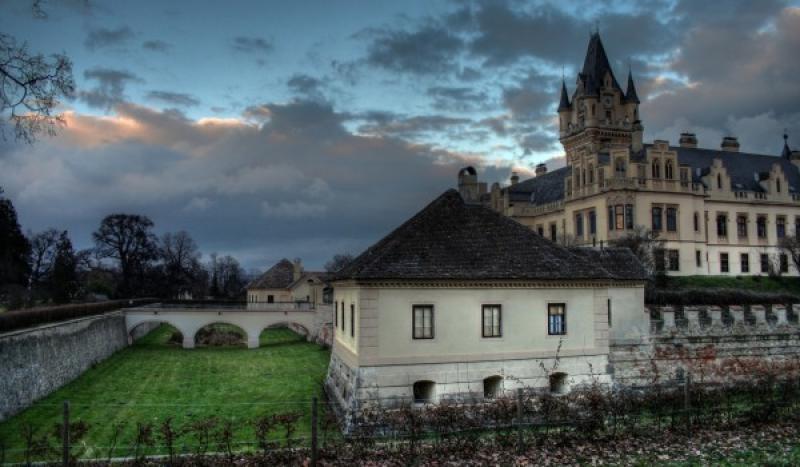
It may not be the land of milk and honey, but as the home of wine and apricots Lower Austria’s Wachau might just be even better. Bookended by the towns of Melk and Krems, this stretch of the Danube valley is absurdly picturesque, strewing the banks of the river with enough wooded hillsides and ruined castles to fill a Gothic novel (or several).
But at just 50 miles from Vienna this storybook-wilderness is really anything but wild. The crags are neatly terraced into vineyards (earning the region its nickname of “the Tuscany of Austria"), while the abbeys and castles tell a tale of religious and cultural civilisation going back over eight centuries. It’s a tradition that’s still very much alive; the Grafenegg Festival may have its home in a 16th-century castle, but its annual programme of classical music brings it right up to date.
Anything could happen in such a landscape; there’s no music that couldn’t find a home here
The spirit and broad repertoire of the festival is entirely bound-up with its venue, mirroring its decidedly quirky and eclectic aesthetic. Picture a castle and you won’t even come close to the reality of Schloss Grafenegg. Yes it has all the Gothic towers and Tudor arches, the parklands and courtyards you might imagine, but these are – at least in part – illusion, and all the more interesting for it. The castle’s current owner Tassilo Metternich likens the building to Strawberry Hill, Horace Walpole’s neo-gothic manor house in Twickenham. It shares the same exuberant fascination with the past, the same magpie desire to hoard and preserve its treasures.
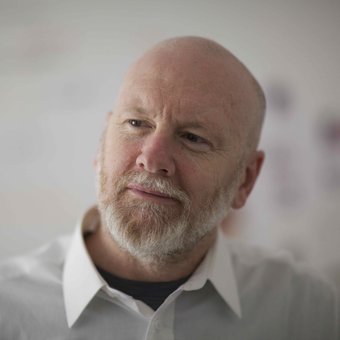 Largely the product of 19th-century historicism, Schloss Grafenegg’s renaissance core remains only in fragment. The greater part of the building is architectural homage, and to walk through its rooms is to take a time-travelling stroll through medieval and Renaissance history. You move from a neo-Renaissance knight’s hall to a neo-baroque library, look down from a gallery onto a neo-gothic chapel and look out from the windows onto Biedermeier houses in landscaped parkland that wouldn’t have shamed Capability Brown. Oh, and in amongst it all there’s an aerodynamic eruption of metal and concrete – the contemporary Wolkenturm (“cloud-tower”) ampthitheatre, built in 2007.
Largely the product of 19th-century historicism, Schloss Grafenegg’s renaissance core remains only in fragment. The greater part of the building is architectural homage, and to walk through its rooms is to take a time-travelling stroll through medieval and Renaissance history. You move from a neo-Renaissance knight’s hall to a neo-baroque library, look down from a gallery onto a neo-gothic chapel and look out from the windows onto Biedermeier houses in landscaped parkland that wouldn’t have shamed Capability Brown. Oh, and in amongst it all there’s an aerodynamic eruption of metal and concrete – the contemporary Wolkenturm (“cloud-tower”) ampthitheatre, built in 2007.
There’s scholarship here, but also a keen delight in novelty and beauty – whatever form it might take. The effect is oddly exhilarating; anything could happen in such a landscape, and with concert venues ranging from a contemporary amphitheatre to a converted 19th-century riding school (complete, still, with ornate marble drinking-troughs) there’s no music that couldn’t find a home here. It’s a theory tested by this year’s festival, whose opening weekend roamed from Brahms chamber music to Mahler’s mighty Third Symphony, from Burt Bacharach (performed by the 12 Cellos of the Berlin Philharmonic) to Australian composer-conductor Brett Dean (pictured above), and the contemporary works of the six young composers participating in the Ink Still Wet masterclass.
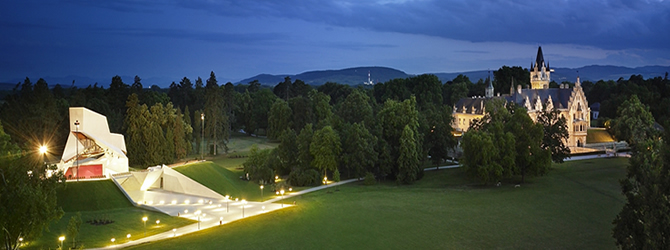 The Ink Still Wet project has become a fixture of the festival, offering a rare opportunity for composers to receive training and guidance not on their music itself but their conducting. The career of a contemporary composer is a precarious one, and the ability to step up and conduct your own works is crucial in gaining exposure for the music as well as a very useful second-string skill in its own right. This year masterclasses were led by Brett Dean, also composer-in-residence throughout the festival, and accompanied by the festival’s resident orchestra, Vienna’s Tonkunstler-Orchesters Niedosterreich. Participants were chosen by application, open internationally, and the resulting group featured everything from experienced and trained conductors to at least one composer who had never stood before an orchestra before. While the training sessions themselves are closed to the public, the course’s final concert (and post-concert Q&A) is open to all, and forms a fascinating part of the Grafenegg musical experience.
The Ink Still Wet project has become a fixture of the festival, offering a rare opportunity for composers to receive training and guidance not on their music itself but their conducting. The career of a contemporary composer is a precarious one, and the ability to step up and conduct your own works is crucial in gaining exposure for the music as well as a very useful second-string skill in its own right. This year masterclasses were led by Brett Dean, also composer-in-residence throughout the festival, and accompanied by the festival’s resident orchestra, Vienna’s Tonkunstler-Orchesters Niedosterreich. Participants were chosen by application, open internationally, and the resulting group featured everything from experienced and trained conductors to at least one composer who had never stood before an orchestra before. While the training sessions themselves are closed to the public, the course’s final concert (and post-concert Q&A) is open to all, and forms a fascinating part of the Grafenegg musical experience.
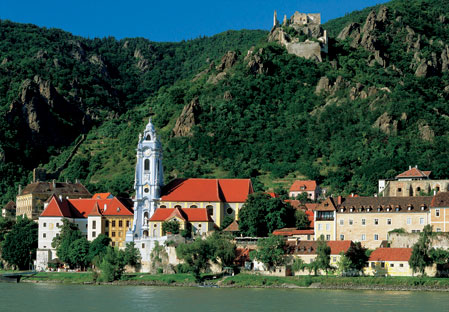 Most interesting among the 2013 participants was the collective attitude to tonality. Anyone expecting a post-tonal assault of sound would have been disappointed by the varied and inventive attitudes to conventional harmony adopted by the composers. None rejected it outright, although unturned percussion did play a large role in colouring sound-worlds, and instead each found their own translation and negotiation between its points of reference and a more unmoored harmonic language.
Most interesting among the 2013 participants was the collective attitude to tonality. Anyone expecting a post-tonal assault of sound would have been disappointed by the varied and inventive attitudes to conventional harmony adopted by the composers. None rejected it outright, although unturned percussion did play a large role in colouring sound-worlds, and instead each found their own translation and negotiation between its points of reference and a more unmoored harmonic language.
Young Austrian Markus Zierhofer offered us a barely-suppressed Romantic tone-poem in his EnLivening. Painting thickly with his orchestra, Zierhofer set a Mahler symphony loose in an urban-noir David Lynch landscape, letting it shed its harmonic inhibitions and succumb to gorgeous confusion and violence. Italian Alberto Schiavo conjured a contrasting landscape, drawing liquid fragility from his woodwind-dominated orchestra in a series of allusive musical fragments that fluttered and dripped with exquisite precision.
Built around a series of focal weekends, the Grafenegg Festival setup invites an immersive approach from its audience. Drive down from Vienna on Friday afternoon and picnic in the grounds of the Schloss (for less hardy types there is a handy café selling all edible necessities on-site) before wandering over to the open-air Wolkenturm for an evening concert. Stay overnight in one of the many B&B’s or hotels in the Wachau (pictured above, for situtation you’d struggle to beat the Hotel Schloss Durnstein with its riverside terrace and views up to the ruins where Richard the Lionheart was famously imprisoned by Leopold V) and wake up for an informal morning concert in the Grafenegg Reitschule. Spend the afternoon exploring the castle itself and walking in the parkland before the Prelude Concert – a short warm-up for the evening’s main musical event.
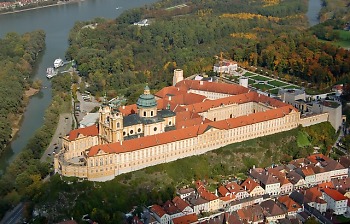 There’s also plenty to do outside the Grafenegg grounds. There are vineyards to visit and local wines to taste (try Kammern’s Weingut Hirsch, a family winery with amazing views whose owner Johannes Hirsch is a passionate convert to biodynamic processes) and of course masses of culture. Perched up on a 200-foot cliff overlooking the Danube the baroque abbey at Melk (pictured above) is a UNESCO World Heritage Site, and houses a library of 100,000 historical works that inspired Umberto Eco’s The Name of the Rose. Its gardens sprawl wide around the abbey itself, offering a welcome contrast to the lavish, gilded interiors.
There’s also plenty to do outside the Grafenegg grounds. There are vineyards to visit and local wines to taste (try Kammern’s Weingut Hirsch, a family winery with amazing views whose owner Johannes Hirsch is a passionate convert to biodynamic processes) and of course masses of culture. Perched up on a 200-foot cliff overlooking the Danube the baroque abbey at Melk (pictured above) is a UNESCO World Heritage Site, and houses a library of 100,000 historical works that inspired Umberto Eco’s The Name of the Rose. Its gardens sprawl wide around the abbey itself, offering a welcome contrast to the lavish, gilded interiors.
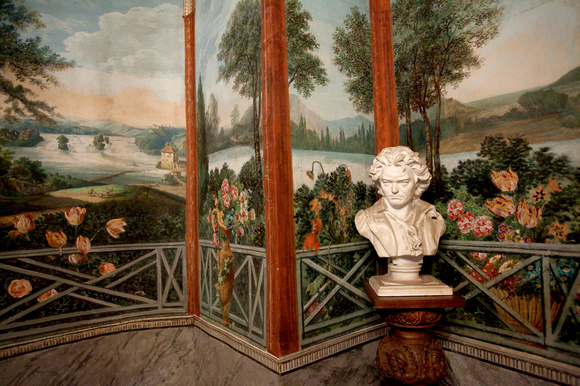 Although much smaller and much less likely to make it into guidebooks, the musical gem of the Wachau is surely the Beethovenhaus at Gneixendorf (pictured right). Street signs give up long before you get near, but persist and you’ll discover a tumbledown old farmhouse. Get past the gatekeeper chickens, and you’ll find something as far removed from composer’s sanitised house-museum in Bonn as could be imagined. During the final autumn of his life, while writing the Ninth Symphony (whose autograph score is marked “Gneixendorf”) Beethoven stayed in the upper apartment of this farmhouse owned by his brother.
Although much smaller and much less likely to make it into guidebooks, the musical gem of the Wachau is surely the Beethovenhaus at Gneixendorf (pictured right). Street signs give up long before you get near, but persist and you’ll discover a tumbledown old farmhouse. Get past the gatekeeper chickens, and you’ll find something as far removed from composer’s sanitised house-museum in Bonn as could be imagined. During the final autumn of his life, while writing the Ninth Symphony (whose autograph score is marked “Gneixendorf”) Beethoven stayed in the upper apartment of this farmhouse owned by his brother.
A modest dining room, sitting room and bedroom are brightened by elaborate wall-paintings – the scenes the composer himself would have seen from his piano or his writing desk, while the few items of furniture (none original, but all in-keeping with Beethoven’s day) give a vivid sense of daily life here. Once the composer left this retreat to return to Vienna he would live for only a few more months. Maybe it’s the primitive, un-museum character of the house, maybe it’s the sheer unexpectedness of it, but you feel closer to the composer here than in any of his more-frequented homes and venues in Vienna.
Every year the Grafenegg Festival changes and grows – almost unrecognisable now in 2013, both physically and artistically, to its modest beginnings in 2007. Ink Still Wet isn’t just the name of the workshops here, it’s a philosophy that extends to all aspects of a festival that is constantly revising and adapting, always a work-in-progress. So who knows what 2014 visitors can expect. Every good fairytale always has a twist in the story, and this magical castle-festival is no different.
Explore topics
Share this article
The future of Arts Journalism
You can stop theartsdesk.com closing!
We urgently need financing to survive. Our fundraising drive has thus far raised £49,000 but we need to reach £100,000 or we will be forced to close. Please contribute here: https://gofund.me/c3f6033d
And if you can forward this information to anyone who might assist, we’d be grateful.

Subscribe to theartsdesk.com
Thank you for continuing to read our work on theartsdesk.com. For unlimited access to every article in its entirety, including our archive of more than 15,000 pieces, we're asking for £5 per month or £40 per year. We feel it's a very good deal, and hope you do too.
To take a subscription now simply click here.
And if you're looking for that extra gift for a friend or family member, why not treat them to a theartsdesk.com gift subscription?
more Classical music
 Bizet in 150th anniversary year: rich and rare French offerings from Palazzetto Bru Zane
Specialists in French romantic music unveil a treasure trove both live and on disc
Bizet in 150th anniversary year: rich and rare French offerings from Palazzetto Bru Zane
Specialists in French romantic music unveil a treasure trove both live and on disc
 Scottish Chamber Orchestra, Ibragimova, Queen’s Hall, Edinburgh review - rarities, novelties and drumrolls
A pity the SCO didn't pick a better showcase for a shining guest artist
Scottish Chamber Orchestra, Ibragimova, Queen’s Hall, Edinburgh review - rarities, novelties and drumrolls
A pity the SCO didn't pick a better showcase for a shining guest artist
 Kilsby, Parkes, Sinfonia of London, Wilson, Barbican review - string things zing and sing in expert hands
British masterpieces for strings plus other-worldly tenor and horn - and a muscular rarity
Kilsby, Parkes, Sinfonia of London, Wilson, Barbican review - string things zing and sing in expert hands
British masterpieces for strings plus other-worldly tenor and horn - and a muscular rarity
 From Historical to Hip-Hop, Classically Black Music Festival, Kings Place review - a cluster of impressive stars for the future
From quasi-Mozartian elegance to the gritty humour of a kitchen inspection
From Historical to Hip-Hop, Classically Black Music Festival, Kings Place review - a cluster of impressive stars for the future
From quasi-Mozartian elegance to the gritty humour of a kitchen inspection
 Shibe, LSO, Adès, Barbican review - gaudy and glorious new music alongside serene Sibelius
Adès’s passion makes persuasive case for the music he loves, both new and old
Shibe, LSO, Adès, Barbican review - gaudy and glorious new music alongside serene Sibelius
Adès’s passion makes persuasive case for the music he loves, both new and old
 Anja Mittermüller, Richard Fu, Wigmore Hall review - a glorious hall debut
The Austrian mezzo shines - at the age of 22
Anja Mittermüller, Richard Fu, Wigmore Hall review - a glorious hall debut
The Austrian mezzo shines - at the age of 22
 First Person: clarinettist Oliver Pashley on the new horizons of The Hermes Experiment's latest album
Compositions by members of this unusual quartet feature for the first time
First Person: clarinettist Oliver Pashley on the new horizons of The Hermes Experiment's latest album
Compositions by members of this unusual quartet feature for the first time
 Gesualdo Passione, Les Arts Florissants, Amala Dior Company, Barbican review - inspired collaboration excavates the music's humanity
At times it was like watching an anarchic religious procession
Gesualdo Passione, Les Arts Florissants, Amala Dior Company, Barbican review - inspired collaboration excavates the music's humanity
At times it was like watching an anarchic religious procession
 Classical CDs: Camels, concrete and cabaret
An influential American composer's 90th birthday box, plus British piano concertos and a father-and-son duo
Classical CDs: Camels, concrete and cabaret
An influential American composer's 90th birthday box, plus British piano concertos and a father-and-son duo
 Cockerham, Manchester Camerata, Sheen, Martin Harris Centre, Manchester review - re-enacting the dawn of modernism
Two UK premieres added to three miniatures from a seminal event of January 1914
Cockerham, Manchester Camerata, Sheen, Martin Harris Centre, Manchester review - re-enacting the dawn of modernism
Two UK premieres added to three miniatures from a seminal event of January 1914
 Kempf, Brno Philharmonic, Davies, Bridgewater Hall, Manchester review - European tradition meets American jazz
Bouncing Czechs enjoy their Gershwin and Brubeck alongside Janáček and Dvořák
Kempf, Brno Philharmonic, Davies, Bridgewater Hall, Manchester review - European tradition meets American jazz
Bouncing Czechs enjoy their Gershwin and Brubeck alongside Janáček and Dvořák
 Solomon, OAE, Butt, QEH review - daft Biblical whitewashing with great choruses
Even a top soprano and mezzo can’t make this Handel paean wholly convincing
Solomon, OAE, Butt, QEH review - daft Biblical whitewashing with great choruses
Even a top soprano and mezzo can’t make this Handel paean wholly convincing

Add comment